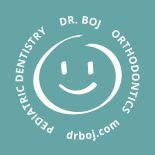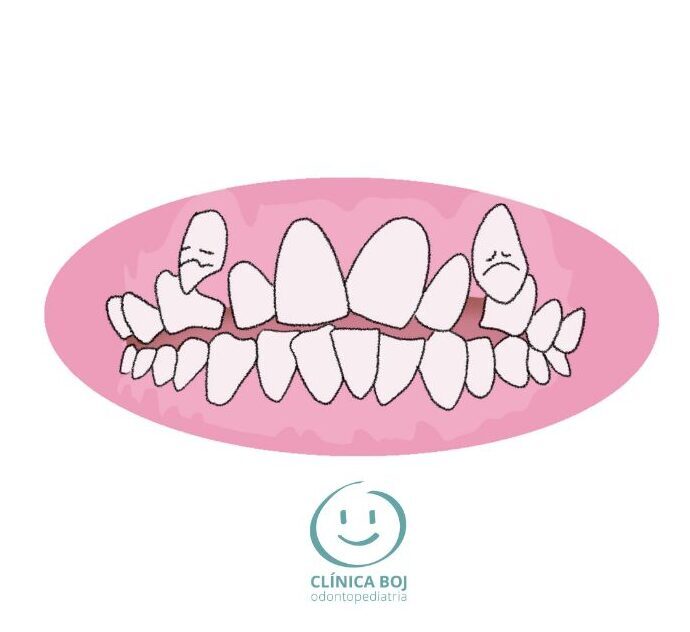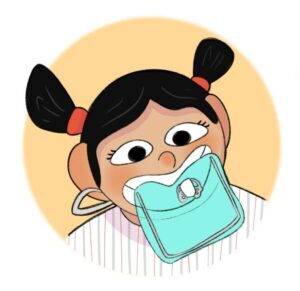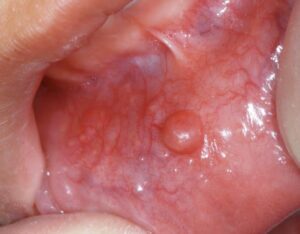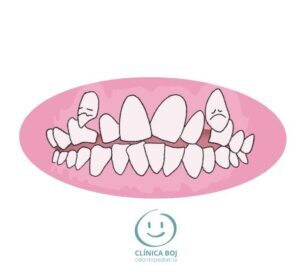Dental crowding or crooked teeth: what to do?
Should crowded teeth be fixed?
Dental crowding is a type of malocclusion. There is a lack of space for all the teeth to fit normally in one or both jaws. Therefore, teeth do not look aligned, but crooked or misaligned.
In summary, there are three types of dental crowding:
(a) slight dental crowding
(b) moderate crowding
(c) severe dental crowding
Can crooked teeth be fixed?
For sure, crooked teeth are the evidence that there is a problem, not only aesthetic but also functional.
It is due to a malocclusion in which the teeth do not have the correct position and become crowded or crooked. The length of the bone is not enough to fit the teeth present.
Therefore, it is important to correct it through orthodontics. Depending on the degree of crowding (slight, moderate or severe) the orthodontic approach will vary. An orthodontic study will be needed to choose the best approach for the young patient.
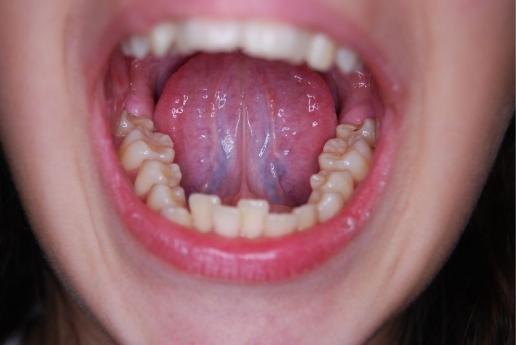
What can crowding of teeth cause?
Typically, the causes of overcrowded teeth is a lack of space in the jaws. This happens because the jaws have not grown enough to cover all the teeth in the arch.
Crowding can also be caused by macrodontic teeth, that is, teeth grow bigger than the space available. Normally, because teeth are larger than normal in size.
Also, oral health can be compromised. Oral hygiene becomes more difficult to perform. Plaque removal through brushing and flossing is not always as effective as when teeth are correctly aligned.
Why does my baby have a crooked tooth?
In most cases, this may not cause any future problem. Specifically, a single crooked tooth in a baby may be an initial position when it erupts. But, over time, many teeth may shift and align spontaneously with the eruption of adjacent teeth and growth.
However, the baby should be kept under observation with regular check-ups. In such cases, the pediatric dentist will control the evolution of crooked tooth.
In addition, on many occasions, thumb sucking can affect the position of the baby teeth, primarily the front teeth.
What causes crooked teeth?
Undoubtedly, there are different causes for getting crooked teeth.
Clearly, the most frequent cause is genetic. Misaligned teeth may be due to a small jaw and lack of enough space for the permanent teeth. This may create a crowding of the teeth. In other words, teeth get crooked because they do not fit in the bone space they have.
Additionally, other causes can be bad habits for occlusion such as: lip sucking, tongue thrusting, lip interposition or atypical swallowing.
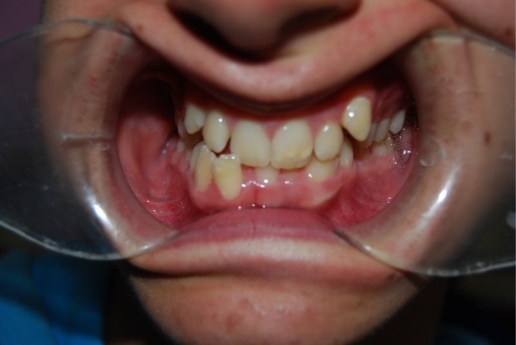
What happens if permanent teeth erupt before baby teeth fall out?
Sometimes, permanent teeth erupt before the primary teeth fall out. If this happens, they erupt in front or behind them, remaining in a position that is not correct.
In these cases, a pediatric dentist should assess the need or not for extraction of the temporary tooth. This will allow the permanent tooth to take its place, or at least, to improve to a better position.
How do you fix badly crooked-crowded teeth?
Basically, the treatments indicated to align or correct crooked teeth consist of interceptive or fixed orthodontics.
Undoubtedly, each case is evaluated individually and the most appropriate treatment is indicated after a study.
Therefore, if diagnosis and treatment are performed at an early age, better and faster results can be obtained.
In this way, we also have less risk of developing other health problems such as gum diseases or tooth decay. Without doubt, dental crowding increases the risk for tooth decay or gingivitis.
Furthermore, orthodontic treatment options, taking all health issues into consideration, are analyzed for crowded teeth.
Clearly, in cases where a dental lack of space is detected early, interceptive orthodontics can be performed.
However, in other cases, interceptive orthodontics is combined with fixed orthodontics. Also, in some cases, only fixed orthodontics is used to correct crowding.
Overmore, there are even cases when severe crowding is present that we may need teeth extracted.
Sometimes, it can be of premolars (the most classic and frequent in orthodontics) and, in others, of third molars (wisdom teeth).
How long will I need braces for crowding?
Without doubt, the length of time it takes to correct crowded teeth with braces will depend on each case. Therefore, the time needed to correct them will vary according to the degree of crowding.
Finally, if braces are the treatment of choice we may use esthetic or metal braces. Nevertheless, many of the cases that are treated with braces can be also be treated with invisible orthodontics or lingual braces.
What age should you fix crooked teeth?
Particularly, crooked teeth are corrected at different ages with orthodontic treatment in children and teenagers. To end, every case is different and there are no standard ages for individual patients.
Bibliography
